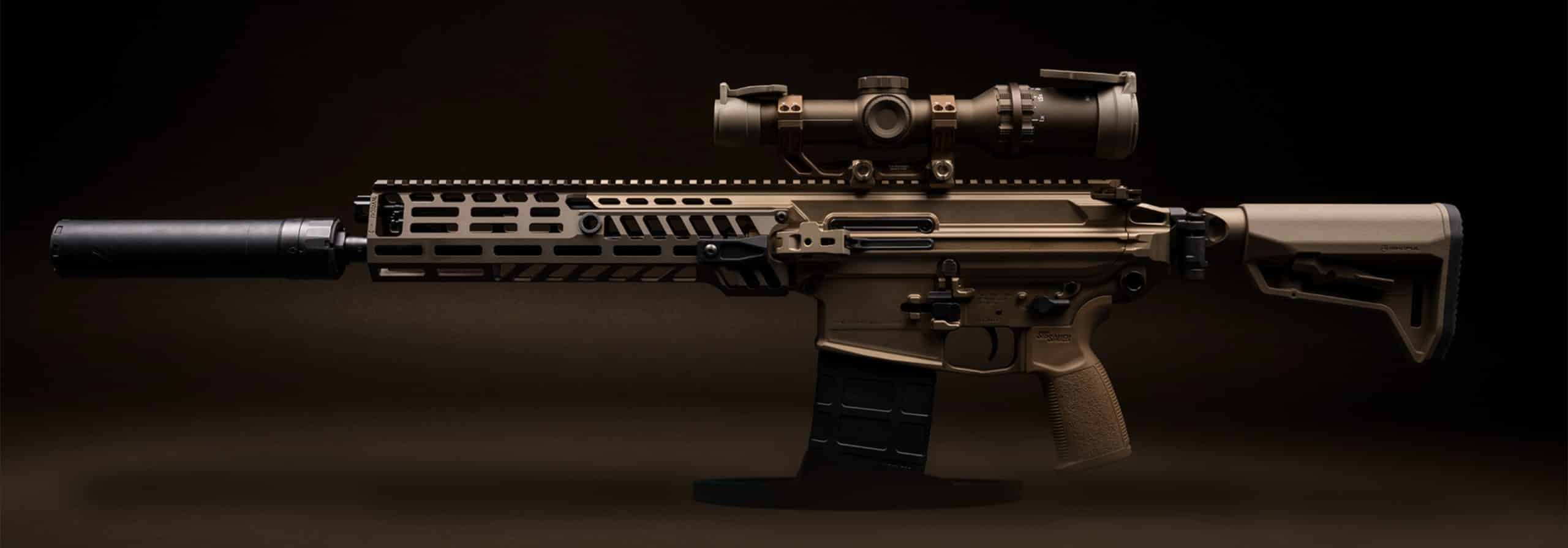
Categories:
The SR25 rifle, renowned for its exceptional precision and adaptability, is a favored choice among military, law enforcement, and civilian marksmen. Central to maximizing the effectiveness of this high-performance gun is the selection and implementation of appropriate mounting solutions. These solutions not only enhance the rifle’s functionality but also ensure that it meets the specific needs of its user in various tactical scenarios.
Mounting solutions for the SR25 encompass a wide array of accessories designed to improve accuracy, ergonomics, and operational efficiency. Optics mounts are paramount; they facilitate the attachment of scopes or red dot sights that enable shooters to engage targets with greater precision at varying distances. The importance of a stable and reliable optics mount cannot be overstated, as it directly influences shot placement and consistency.
Beyond optics, rail systems play a crucial role in the versatility of the SR25. These systems allow for the attachment of additional accessories such as bipods, foregrips, laser aiming modules, and tactical lights. A well-configured rail system transforms the SR25 from a standard rifle into a multi-faceted tool capable of adapting to diverse mission requirements.
Moreover, quick-detach (QD) mounts offer another layer of flexibility by allowing rapid switching between different accessories without compromising zero retention or stability. This feature is particularly beneficial in dynamic environments where adaptability can be critical to mission success.
In essence, understanding and selecting appropriate mounting solutions for the SR25 rifle is integral to harnessing its full potential. Whether enhancing accuracy through superior optics or expanding functionality with versatile rail systems, these components play an indispensable role in optimizing performance for any user’s specific operational context.
When it comes to equipping the SR25 rifle with mounting solutions, understanding the variety and functionality of available options is crucial for optimizing performance. The SR25, known for its precision and adaptability, benefits from a range of mounting systems designed to enhance its capabilities in various operational contexts. One prominent type of mounting solution is the Picatinny rail system. This standardized rail interface allows for the easy attachment of scopes, red dot sights, and other optical devices.
The Picatinny rail’s versatility extends to accommodating tactical accessories such as laser sights and flashlights, making it a popular choice among operators who require rapid adaptability in dynamic environments. Another important mounting solution involves KeyMod and M-LOK systems. These modular accessory-attachment methods provide shooters with lightweight yet robust options for customizing their rifle setups. By allowing direct attachment of accessories without the need for intermediary adapters, both KeyMod and M-LOK reduce overall weight and streamline the profile of the SR25.
This can be particularly advantageous in scenarios where maneuverability and speed are essential. For those prioritizing stability and precision during long-range engagements, bipod mounts offer an indispensable solution. Bipods can be attached via specific mounts compatible with Picatinny rails or through direct interfaces tailored to KeyMod or M-LOK systems. These mounts ensure that shooters maintain steady aim over extended periods, significantly improving accuracy at greater distances.
Lastly, quick-detach (QD) mounts represent an innovative solution for users who need to rapidly switch between different optics or accessories without losing zero on their primary sighting system. QD mounts facilitate swift transitions between configurations while maintaining reliability and repeatability.
Choosing the right scope mount for your SR25 rifle is crucial to optimizing its performance and ensuring accuracy. The SR25, a highly regarded semi-automatic precision rifle, demands a mounting solution that can withstand its recoil while maintaining zero across various shooting conditions. Here are key considerations to guide your selection. Firstly, material choice is pivotal. Scope mounts are typically made from either aluminum or steel.
Aluminum mounts offer a lighter weight option, which can be beneficial for reducing overall carry weight and maintaining balance. However, steel mounts provide superior durability and strength, which is essential for maintaining zero through rigorous use. The type of mount also plays a significant role. One-piece mounts offer greater stability and alignment by connecting directly to the rifle’s Picatinny rail system with fewer points of potential shift or movement.
On the other hand, two-piece mounts provide more flexibility in terms of eye relief adjustment but may require more meticulous alignment to ensure precision. Height and cant are additional factors to consider. The height of the mount should complement your optic’s size and your shooting posture to ensure comfortable eye alignment without straining your neck or eyes. Cantilevered designs can offer extended forward positioning, which is useful if you require additional space for backup iron sights or other accessories.
Lastly, consider quick-detach (QD) options if versatility is important to you. QD mounts allow for rapid removal and reattachment of optics without losing zero—ideal for shooters who switch between different sighting systems frequently. In summary, selecting the right scope mount involves balancing material strength with weight considerations, choosing between one-piece or two-piece designs based on stability needs, ensuring proper height and positioning for comfort and accuracy, and evaluating QD features based on usage scenarios.
When it comes to enhancing the stability and precision of an SR25 rifle, selecting the appropriate bipod mounting option is crucial. A well-chosen bipod can significantly improve shooting accuracy by providing a stable platform, allowing for consistent shot placement even under challenging conditions.
One of the primary considerations is the type of mounting interface available on your SR25. Many modern SR25 rifles come equipped with a Picatinny rail system, which offers versatility and ease of attachment. A Picatinny-mounted bipod allows for quick installation and removal, making it ideal for shooters who need to adapt rapidly to varying shooting scenarios. This system also provides a secure fit, ensuring that the bipod remains firmly in place during use.
For those seeking even greater customization and flexibility, M-LOK compatible handguards offer another excellent option. M-LOK systems allow users to attach bipods at different points along the handguard, enabling fine-tuning of balance and ergonomics. This adaptability can be particularly beneficial in dynamic shooting environments where rapid positional adjustments are necessary.
Another consideration is whether to opt for a direct-attach or swivel-stud mounted bipod. Swivel-stud mounts provide an additional layer of flexibility by allowing the shooter to pivot or tilt the rifle without repositioning entirely. This can be advantageous in uneven terrain or when engaging moving targets.
Ultimately, selecting the right bipod mounting solution involves balancing stability with ease of use and adaptability. By carefully considering these factors and choosing a high-quality bipod compatible with your SR25’s mounting system, you can enhance both your shooting performance and overall experience in various operational contexts.
Tactical rail systems are integral to the versatility and functionality of the SR25 rifle, providing a platform for mounting a wide range of accessories that enhance performance in various operational contexts. These systems, often featuring Picatinny or M-LOK rails, allow users to customize their rifles with precision optics, laser sights, tactical lights, bipods, and foregrips. The adaptability offered by tactical rail systems ensures that the SR25 can be tailored to meet specific mission requirements, whether it involves long-range engagements or close-quarters combat.
One of the primary benefits of these rail systems is their ability to facilitate rapid attachment and detachment of accessories. This modularity means operators can quickly reconfigure their weapons in response to changing tactical scenarios without needing specialized tools or extensive downtime. For instance, an operator might switch from a high-powered scope suitable for sniper roles to a red dot sight more appropriate for dynamic urban environments within minutes.
Additionally, tactical rail systems contribute significantly to improved accuracy and target acquisition. By securely mounting optics and aiming devices directly on the rifle’s chassis, shooters benefit from enhanced stability and alignment. This integration minimizes movement between components during recoil, ensuring that zero settings remain consistent across different shooting conditions. The ergonomic advantages provided by these rails cannot be overstated either. Customizable handguards equipped with M-LOK slots allow users to attach accessories like vertical grips or angled foregrips at preferred positions along the rifle’s length.
This enhances handling comfort and control during prolonged use or when maneuvering through tight spaces. In conclusion, tactical rail systems are indispensable in maximizing the SR25’s effectiveness across diverse operational landscapes.
When it comes to mounting solutions for the SR25 rifle, there are several key installation tips and best practices that can significantly enhance both performance and durability. First and foremost, ensure that you select a high-quality rail system designed specifically for the SR25 platform. Compatibility is crucial, as using generic or ill-fitting mounts can lead to misalignment issues or even damage to your gun.
Before beginning the installation process, thoroughly clean all surfaces where the mount will be attached. Any debris or residue can compromise the stability of your mounting solution, potentially affecting accuracy. Use a degreaser if necessary, followed by a lint-free cloth to ensure a pristine surface.
When attaching the mount, adhere strictly to torque specifications provided by the manufacturer. Over-tightening can strip screws or warp components, while under-tightening may result in a loose fit that affects precision and reliability. A quality torque wrench calibrated for small fasteners is an essential tool in this process.
Optics should be installed with equal care. Level your rifle on a stable platform before attaching scopes or sights to ensure horizontal alignment. This step is crucial for long-range accuracy and consistency. Once mounted, verify that your optic is secure by performing a series of function checks: adjust windage and elevation settings through their full range of motion to confirm smooth operation without any shifting.
Finally, periodic maintenance checks are vital even after successful installation. Regularly inspect all mounting points for signs of wear or loosening over time due to recoil forces or environmental factors like moisture exposure.
By following these best practices during installation and maintenance phases, you will maximize both performance and longevity of your SR25 rifle’s mounting solutions.
When it comes to ensuring the optimal performance and longevity of your mounted accessories on an SR25 rifle, meticulous maintenance and care are paramount. The SR25 is often employed in precision shooting scenarios, making the reliability of its mounted optics, lasers, bipods, and other accessories critical. Regular inspection and upkeep can prevent malfunctions that might compromise accuracy or functionality.
Firstly, it’s essential to regularly check the secure fitting of all mounts. Over time and with repeated firing, screws can loosen due to recoil forces. A routine check with a torque wrench ensures that all mounting hardware remains tight without over-torquing which could strip threads or damage components.
Optics require special attention due to their delicate nature. Clean lenses with a microfiber cloth and appropriate lens cleaner to avoid scratches that could impair vision clarity. Dust and debris can accumulate on optical surfaces during field use; thus, periodic cleaning is necessary. Additionally, ensure that protective caps are used when the rifle is not in operation.
Electronic accessories like illuminated scopes or laser sights need their battery compartments checked frequently for corrosion or leaks. Use high-quality batteries recommended by manufacturers to avoid malfunctions at critical moments.
Environmental conditions can also impact mounted accessories; moisture and dirt are common adversaries in outdoor settings. After exposure to wet conditions or extreme environments, thoroughly dry all components before storage to prevent rusting or material degradation.
In summary, diligent maintenance routines encompassing secure fittings, regular cleaning of optics, careful handling of electronic components, and protection against environmental factors will sustain the performance integrity of your SR25 rifle’s mounted accessories for years to come.
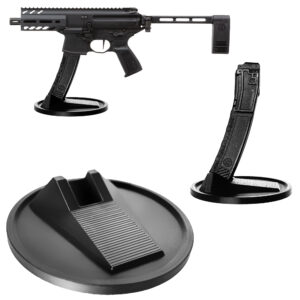
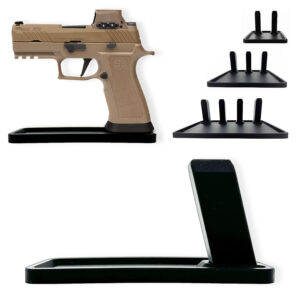
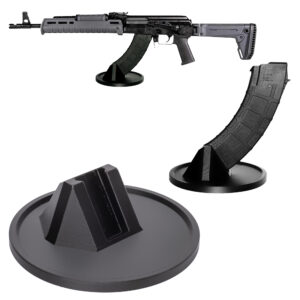


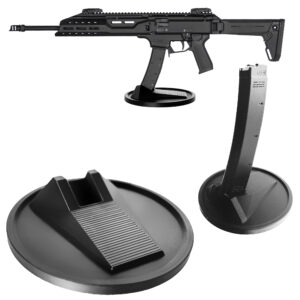
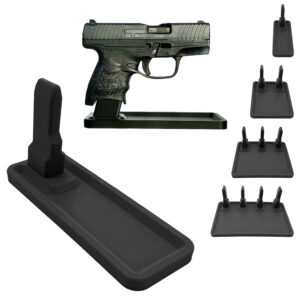

Colt
Colt M4 Carbine
Colt LE6920
Colt AR-15 A4
Daniel Defense
DDM4 V7
DDM4 V9
DDM4 V11
DDM4 ISR (Integrally Suppressed Rifle)
Smith & Wesson (S&W)
M&P15 Sport II
M&P15 Tactical
M&P15T
Bravo Company Manufacturing (BCM)
BCM Recce-16
BCM Recce-14
BCM MCMR Series
Aero Precision
M4E1 Series
AC-15
AR15 Pistol (Various Configurations)
Ruger
Ruger AR-556
Ruger SR-556
Ruger AR-556 MPR (Multi-Purpose Rifle)
Springfield Armory
Saint Victor
Saint Edge
Saint AR-15
PSA (Palmetto State Armory)
PSA PA-15
PSA AR-V
PSA Jakl (AR Pistol)
FN America
FN 15 Tactical Carbine
FN 15 Patrol
FN 15 DMR
Wilson Combat
Recon Tactical
Super Sniper
Protector Carbine
SIG Sauer
SIG M400 Tread
SIG M400 Elite
SIG M400 SDI
LWRC International
IC DI (Direct Impingement)
IC SPR
IC A5
Bushmaster Guns
XM-15 QRC
Bushmaster MOE
XM-15 Patrolman
Rock River Arms
LAR-15 Entry Tactical
LAR-15 Predator
LAR-15 Elite Comp
Stag Arms
Stag 15 Tactical
Stag 15L (Left-Handed Models)
Stag 15 Valkyrie
Noveske Rifleworks
Noveske Gen 4 N4
Noveske Space Invader (AR Pistol)
Noveske Recon
Anderson Manufacturing
AM-15 Optic Ready
AM-15 M4 Carbine
AM-15 Precision Rifle
Adams Arms
AA-15 Piston Rifle
P2 AARS (Adams Arms Rifle Series)
Black Rain Ordnance
SPEC15 Series
BRO Predator
Fallout 15
Diamondback Guns
DB15 Series
DB15CCMLB
DB15EB
Del-Ton Inc.
DTI-15
Del-Ton Echo 316H
Sierra 316M
Windham Weaponry
Windham SRC
Windham VEX-SS
Windham RMCS-4 (Caliber Conversion System)
Christensen Arms
CA-15 G2
CA-15 Recon
CA-15 Titanium Edition
Patriot Ordnance Factory (POF-USA)
Renegade Plus
P415 Edge
Revolution DI
LaRue Tactical
PredatAR
OBR (Optimized Battle Rifle)
LaRue Stealth 2.0
Battle Arms Development
Workhorse Patrol Carbine
BAD556-LW (Lightweight)
Authority Elite Rifle
Faxon Guns
Ascent AR-15
FX-19 (AR Pistol)
Streamline Ultralight Series
KE Arms
KE-15 SLT (Super Lightweight Tactical)
KE-15 Scout Carbine
Primary Weapons Systems (PWS)
MK1 MOD 2-M
MK116 PRO
MK107 (Piston AR Pistol)
ZEV Technologies
ZEV Core Elite Rifle
ZEV AR15 Billet Rifles
Franklin Armory
BFSIII AR-C1
Militia Model
F17-L (Chambered in .17 WSM)
Seekins Precision
SP15 DMR
NX15 Skeletonized Rifle
Havak Bravo
Aero Precision (Additional Models)
EPC-9 (Pistol Caliber ARs)
VG6 AR Rifles
Barrett Guns
REC7 DI
REC7 Gen II
CMMG
MK4 RCE
Resolute 300
Banshee (AR Pistol)
DPMS Panther Arms
Panther Oracle
Panther LR-308
H&K (Heckler & Koch)
HK MR556A1
HK416 (Military Variant)
Rock Island Armory (Armscor)
VR-80 Tactical AR (Shotgun AR Platform)
Troy Industries
Troy SPC-A3
Troy PAR (Pump Action AR)
Wilson Tactical
Tactical Recon AR
Protector Series
F1 Guns
FDR-15 Skeletonized Rifle
BDRx-15 Series
Juggernaut Tactical
JT-15
JT-10 Precision Rifle
AeroSurplus
Surplus AR-15 Rifles (Budget Models)
Thunder Tactical
AR-15 Basic Carbine
Tactical Builder Sets
Radical Guns
RF-15
Forged AR-Series
Dark Storm Industries
DS-15 Featureless Rifles
DS-10 Typhoon
DRD Tactical
Paratus
Aptus AR Rifles
Bear Creek Arsenal
BCA-15
AR Complete Upper Builds
Aero Survival Rifles (ASI)
ASR Tactical Series
Tactical Edge
WARFIGHTER Series
AR-15 Lightweight Rifles
Lone Star Armory
TX15 DMR
TX15 Carbine
HERA Arms
HERA H7
HERA AR-15 Lower Builds
IWI (Israeli Weapon Industries)
Zion-15
DRD Tactical
Tactical Modular Rifles
Quick-Takedown Rifles
V Seven Weapons
1776 Rifle
Hyperlite Rifle
Core Rifle Systems
Core15 Tac III
Core15 Patrol Rifle
Armalite (Original AR-15 Creator)
M15 Tactical
M15 A4 Carbine
DEF15 (Defensive Sporting Rifle Series)
PSA (Palmetto State Armory Additional Models)
PSAK-47 Hybrid (AR-AK Style Hybrid)
PSA Dagger (Pistol Caliber Configurations)
Odin Works
OTR-15
Odin Recon Rifle
Maxim Defense
MDX-508 PDX (Compact AR Pistol)
MDX-510 Rifle